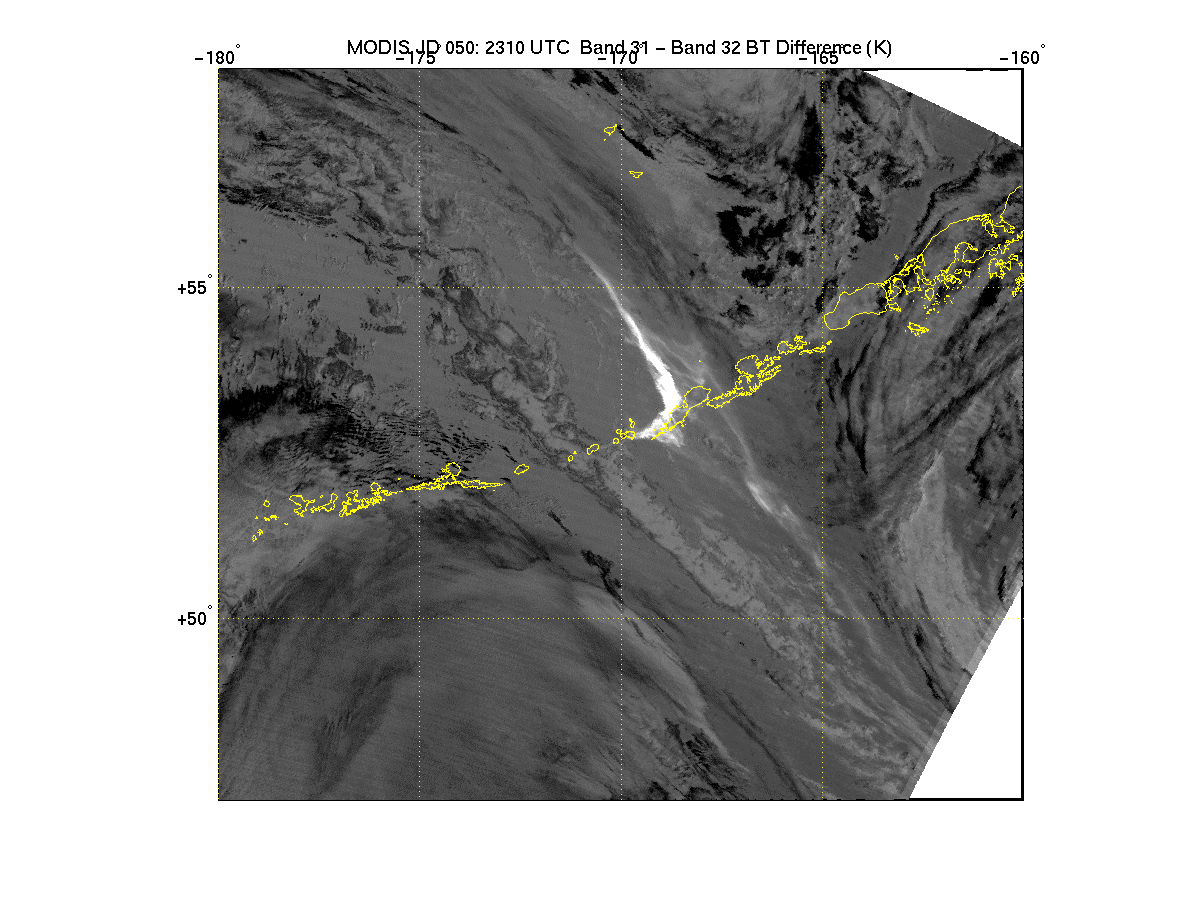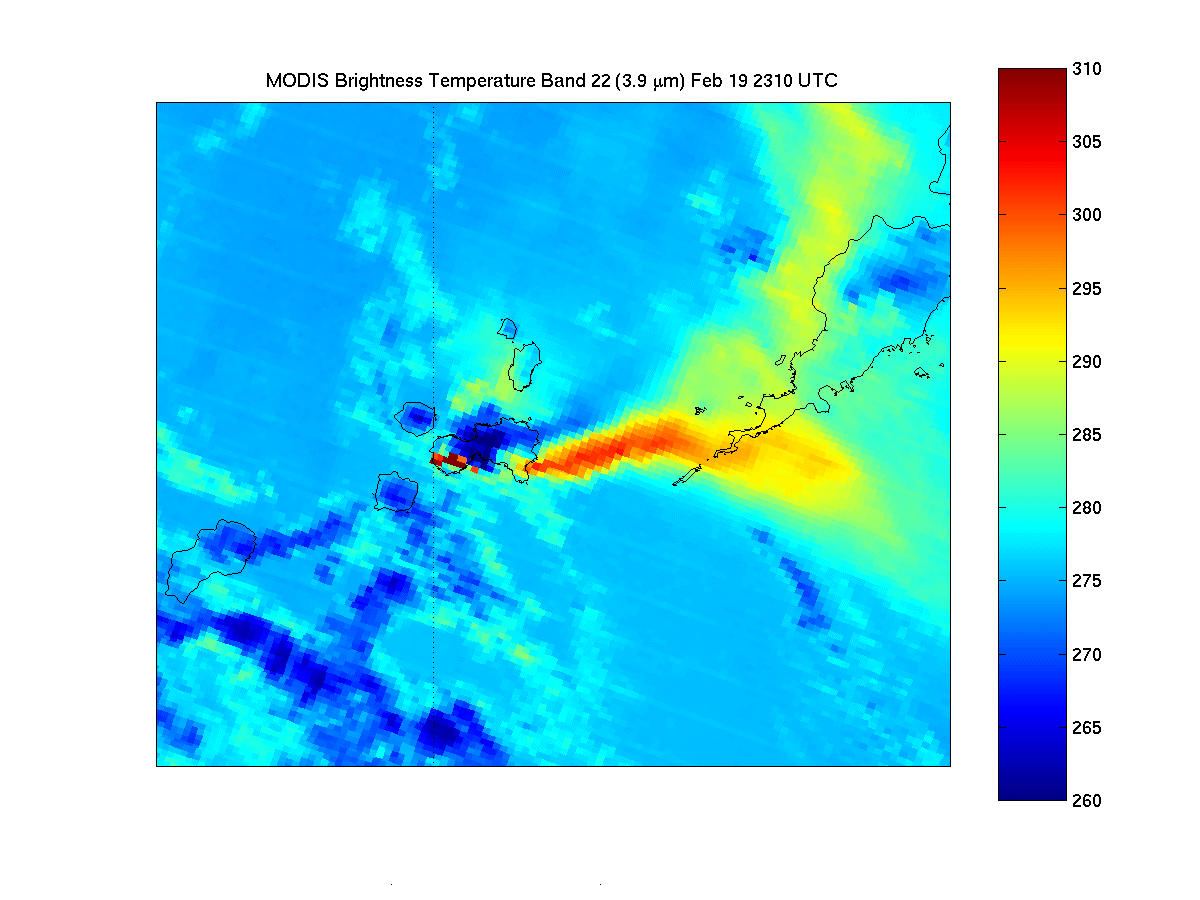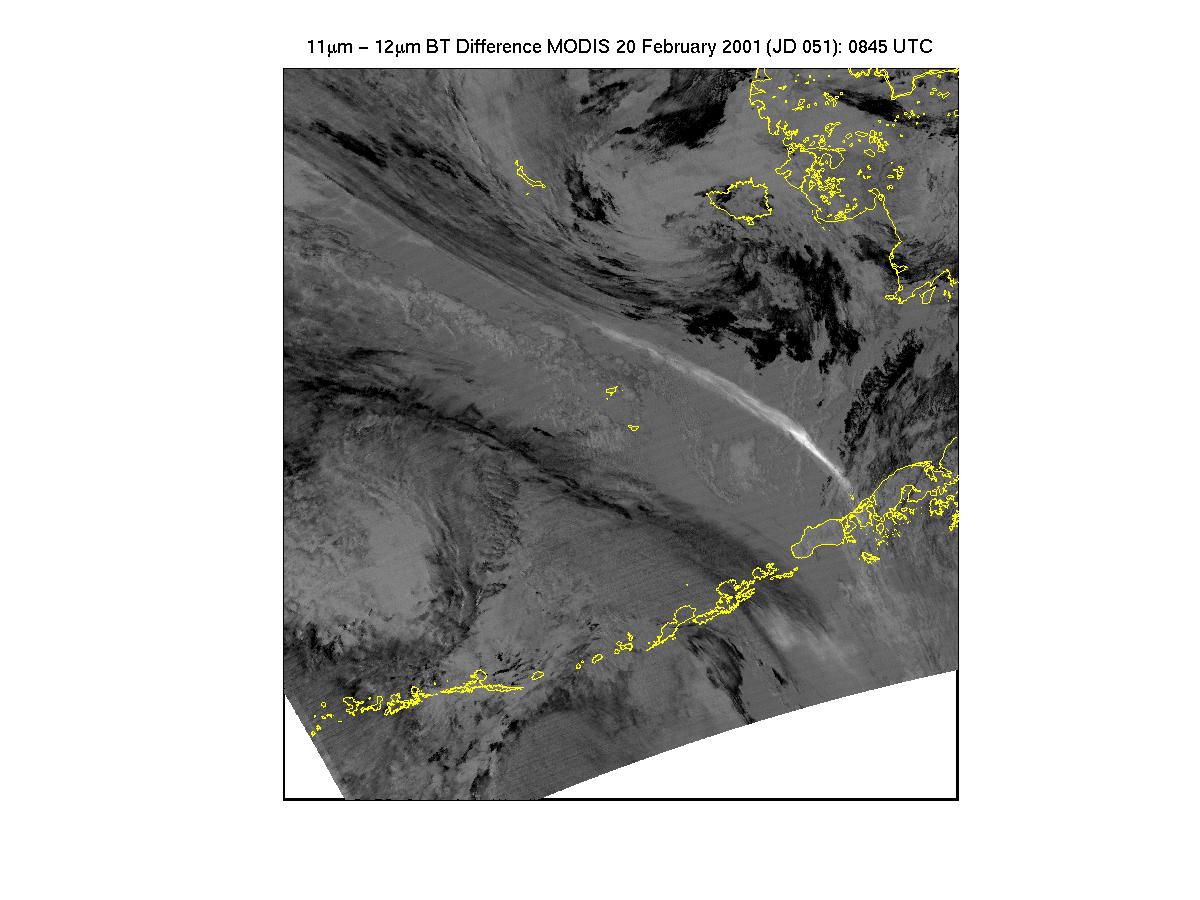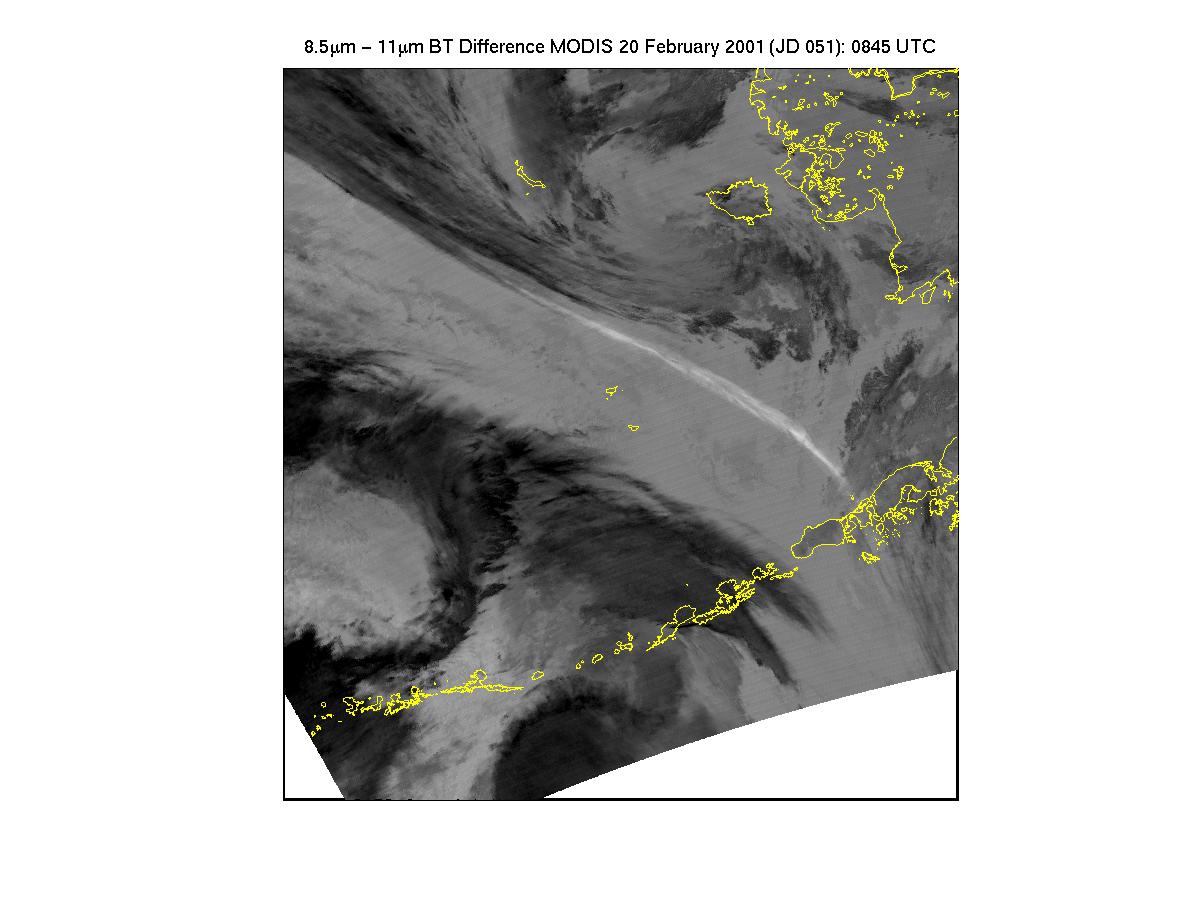|
|
|
 (- Fade between GOES-10 IR difference product and water vapor image -)
(- Fade between GOES-10 IR difference product and water vapor image -) 
|
|
|
 (- Fade between GOES-10 IR difference product and water vapor image -)
(- Fade between GOES-10 IR difference product and water vapor image -) 
NOAA GOES-10 imagery shows the ash plume following the eruption of the Mt. Cleveland volcano in the Aleutian Islands of Alaska on 19 February 2001. The 10.7-12.0 micrometer InfraRed (IR) difference product (above, left) indicates that the ash plume was spreading out in 2 primary directions (one to the NNW, and one to the SE), as discussed in the Anchorage AK volcanic ash advisory issued after the eruption.
It is interesting to note that the higher-level ash plume (near 30,000 feet) moving NNW was also evident on the GOES-10 6.7 micrometer IR ("water vapor") channel (above, right).

|

|
The IR difference product using Terra MODIS data about 8 hours after the initial eruption (above, left) shows that highest ash concentration (brighter white enhancement) continued to spread to the NW. A closer view using the MODIS 3.9 micrometer shortwave IR channel (above, right) reveals very warm pixels (around 310 K, brown enhancement) over the southwestern end of Chuginadak Island, where the volcano itself is located.
About 18 hours following the eruption (08:45 UTC on 20 February), the MODIS 10.7-12.0 micrometer IR difference product (below, left) shows that the ash plume had become further elongated into a narrow filament oriented NW-SE over the Bering Sea (also evident on GOES-10 data). The 8.5-10.7 micrometer IR difference product (below, right) shows better ash plume continuity along the extreme northwestern portion of the plume filament.

MODIS 10.7/12.0 IR difference product (08:45 UTC 20 February) |

|
 (- Fade between MODIS 10.7/12.0 and 8.5/10.7 IR difference products -)
(- Fade between MODIS 10.7/12.0 and 8.5/10.7 IR difference products -) 
